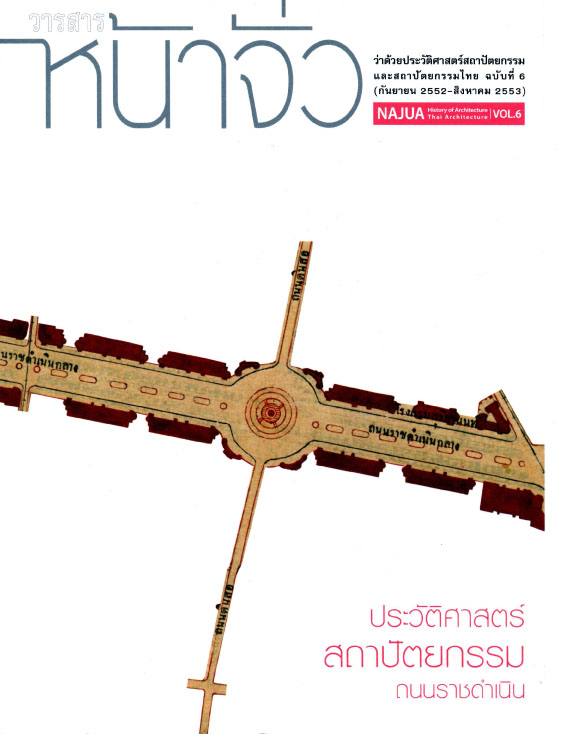ณ ที่นี้ ไม่มี “ความเสื่อม” : ถนนราชดำเนิน พ.ศ. 2484-2488 ส่วนที่ 2 A Place without “Cultural Slackness” : Rajadamnern Boulevard, 1941-45 Part 2
Main Article Content
Abstract
บทคัดย่อ
ถนนราชดำเนินกลางและอาคารสองฟากฝั่งที่เปิดใช้ในปี พ.ศ. 2484 เป็นส่วนหนึ่งในแผนการ “ขจัดความเสื่อม” และสร้างความมีหน้ามีตาของบ้านเมืองให้ทัดเทียมกับต่างชาติในสมัยสงครามโลกครั้งที่ 2 บทความชิ้นนี้ พิจารณาบทบาทหน้าที่ของสถาปัตยกรรมแห่งถนนราชดำเนินกลาง ในฐานะที่เป็นกลไกหนึ่งที่รัฐบาลจอมพล ป. พิบูลสงคราม ใช้ในการควบคุมพฤติกรรมทางสังคมของผู้คนให้บังเกิดขึ้นซึ่งความศิวิไลซ์ นอกจากนี้ บทความยังพยายามทำความเข้าใจปรากฏการณ์สถาปัตยกรรมที่เป็นเอกลักษณ์เฉพาะตัวของอาคารราชดำเนินกลางที่มีการแต่งผิวหน้าอาคารด้วยซีเมนต์นัยแลดูราวกับว่าเป็นหิน บทความตั้งคำถามและค้นหาคุณค่าความหมายของการทำผนัง “เลียนแบบ” หิน ที่อาจดูไม่ค่อยสมเหตุสมผลนี้ บนเงื่อนไขทางวัฒนธรรมและเศรษฐกิจของประเทศไทยแห่งยุคสงครามโลกครั้งที่ 2
Abstract
After its second development, carried out by the People’s Party, Rajadamnern Boulevard was opened in 1941 and had since been a new city centre until the end of the Second World War. The aims of this paper are, first, to show how, in the context of the Second World War when the trend towards modernity was necessary for Thailand’s political relation with Western Powers, Rajadamnern Boulevard was used to activate the pursuit of modernity, and, second, to understand the cultural implication of cement in simulating the faÇades of Rajadamnern Boulevard’s buildings to look like stone walls. The findings indicate that, firstly, the pursuit of modernity lay in the new tasks of establishing new codes of social behaviour making people adapt their behaviours to conform the new demands of propriety, and, secondly, the simulated stone work of Rajadamnern Boulevard’s faÇade can be better understood by taking into consideration together both the demand of architectural propriety and the policy of economic nationalism, propagated in Thailand during the Second World War. This paper draws upon documentary evidence from state papers, unpublished documents at the Crown Property Bureau (Bangkok), and upon first hand analysis of urban space and architecture. The result will revise existing histories of architecture in post-1932 Thailand.Downloads
Download data is not yet available.
Article Details
How to Cite
Sirikiatikul, P. (2014). ณ ที่นี้ ไม่มี “ความเสื่อม” : ถนนราชดำเนิน พ.ศ. 2484-2488 ส่วนที่ 2 A Place without “Cultural Slackness” : Rajadamnern Boulevard, 1941-45 Part 2. NAJUA: History of Architecture and Thai Architecture, 6, 23–37. retrieved from https://so04.tci-thaijo.org/index.php/NAJUA/article/view/16539
Issue
Section
ARTICLES


